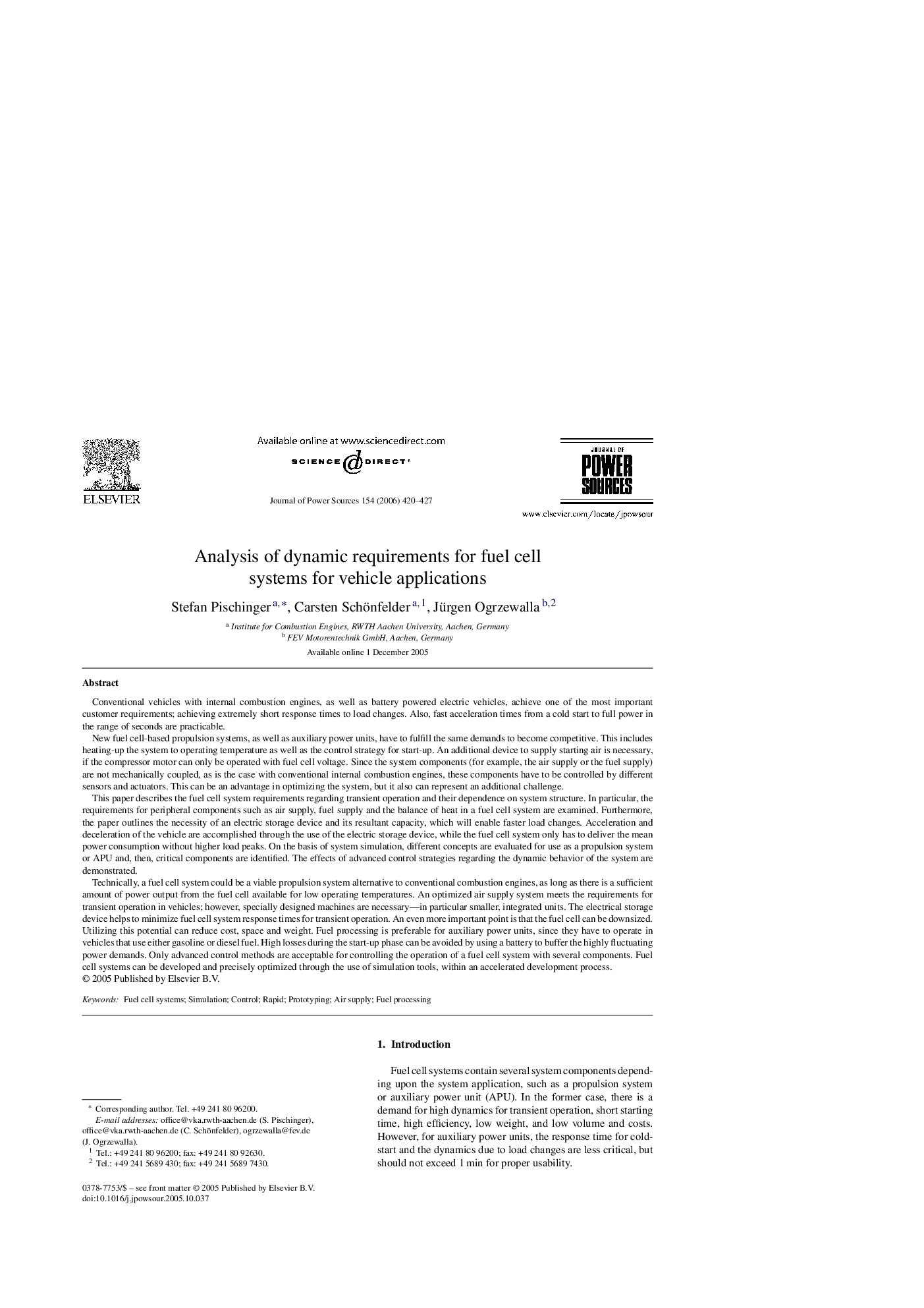| کد مقاله | کد نشریه | سال انتشار | مقاله انگلیسی | نسخه تمام متن |
|---|---|---|---|---|
| 1292801 | 973400 | 2006 | 8 صفحه PDF | دانلود رایگان |

Conventional vehicles with internal combustion engines, as well as battery powered electric vehicles, achieve one of the most important customer requirements; achieving extremely short response times to load changes. Also, fast acceleration times from a cold start to full power in the range of seconds are practicable.New fuel cell-based propulsion systems, as well as auxiliary power units, have to fulfill the same demands to become competitive. This includes heating-up the system to operating temperature as well as the control strategy for start-up. An additional device to supply starting air is necessary, if the compressor motor can only be operated with fuel cell voltage. Since the system components (for example, the air supply or the fuel supply) are not mechanically coupled, as is the case with conventional internal combustion engines, these components have to be controlled by different sensors and actuators. This can be an advantage in optimizing the system, but it also can represent an additional challenge.This paper describes the fuel cell system requirements regarding transient operation and their dependence on system structure. In particular, the requirements for peripheral components such as air supply, fuel supply and the balance of heat in a fuel cell system are examined. Furthermore, the paper outlines the necessity of an electric storage device and its resultant capacity, which will enable faster load changes. Acceleration and deceleration of the vehicle are accomplished through the use of the electric storage device, while the fuel cell system only has to deliver the mean power consumption without higher load peaks. On the basis of system simulation, different concepts are evaluated for use as a propulsion system or APU and, then, critical components are identified. The effects of advanced control strategies regarding the dynamic behavior of the system are demonstrated.Technically, a fuel cell system could be a viable propulsion system alternative to conventional combustion engines, as long as there is a sufficient amount of power output from the fuel cell available for low operating temperatures. An optimized air supply system meets the requirements for transient operation in vehicles; however, specially designed machines are necessary—in particular smaller, integrated units. The electrical storage device helps to minimize fuel cell system response times for transient operation. An even more important point is that the fuel cell can be downsized. Utilizing this potential can reduce cost, space and weight. Fuel processing is preferable for auxiliary power units, since they have to operate in vehicles that use either gasoline or diesel fuel. High losses during the start-up phase can be avoided by using a battery to buffer the highly fluctuating power demands. Only advanced control methods are acceptable for controlling the operation of a fuel cell system with several components. Fuel cell systems can be developed and precisely optimized through the use of simulation tools, within an accelerated development process.
Journal: Journal of Power Sources - Volume 154, Issue 2, 21 March 2006, Pages 420–427